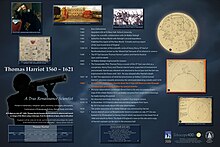Syon Park
[1][2] Syon was the site of Sion Abbey, which was founded in 1415 and named after Mount Zion in Jerusalem.
Landscaping of the gardens in the middle of the eighteenth century have left them with a collection of rare trees and plants and a lake which has a population of terrapins.
[3] In 1609, Thomas Harriot was working at Syon when he made the first ever use of the newly invented telescope to make astronomical drawings of the moon on 26 June, several months ahead of Galileo's observations.
It is a tall wet meadow of reed-grasses, with rye-grass and meadow-grass on higher ground.
There are many small ditches, and it is used by many over-wintering birds and has a number of rare invertebrate species, including uncommon flies.

